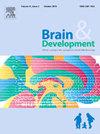Autism-like features and FOXP1 syndrome: A scoping review
IF 1.4
4区 医学
Q4 CLINICAL NEUROLOGY
引用次数: 0
Abstract
FOXP1 syndrome is a rare neurodevelopmental disorder associated with a range of cognitive, behavioural, and physical consequences, including autism spectrum disorder and associated symptomatology. This scoping review aims to explore the prevalence and characteristics of autism and autism-like features in individuals with FOXP1 syndrome. A comprehensive literature search identified 15 studies encompassing 103 participants. Of these, 13 studies (n = 76 participants) detailed autism spectrum disorder diagnostic information, and 13 studies (n = 37 participants) detailed information at the symptom level. Autism spectrum disorder was diagnosed in 39 % (n = 30) of cases, with repetitive and restrictive behaviours being the most commonly reported feature, observed in 89 % (n = 33) of patients. However, significant heterogeneity in study methodologies and diagnostic criteria prevented direct comparisons and may have led to an underestimation of certain symptoms. Additionally, inconsistencies in symptom reporting across studies further limited the accuracy of conclusions. Overall, findings highlight the need for more standardized and detailed assessments of autism-like features in FOXP1 syndrome to improve differential diagnosis and inform targeted intervention strategies. Future research should address these gaps to enhance understanding and clinical management of individuals with FOXP1 syndrome.
求助全文
约1分钟内获得全文
求助全文
来源期刊

Brain & Development
医学-临床神经学
CiteScore
3.60
自引率
0.00%
发文量
153
审稿时长
50 days
期刊介绍:
Brain and Development (ISSN 0387-7604) is the Official Journal of the Japanese Society of Child Neurology, and is aimed to promote clinical child neurology and developmental neuroscience.
The journal is devoted to publishing Review Articles, Full Length Original Papers, Case Reports and Letters to the Editor in the field of Child Neurology and related sciences. Proceedings of meetings, and professional announcements will be published at the Editor''s discretion. Letters concerning articles published in Brain and Development and other relevant issues are also welcome.
 求助内容:
求助内容: 应助结果提醒方式:
应助结果提醒方式:


